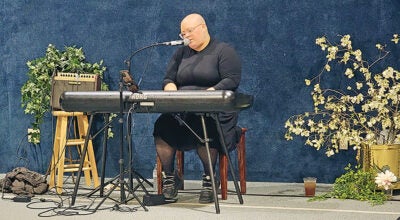It’s time to move the clocks ahead
Published 10:54 am Saturday, March 9, 2019
Bill introduced to end daylight saving time
If you wake up a little groggy on Monday morning because of daylight saving time, blame Benjamin Franklin for the idea and Congress for starting it.
Although people complain about losing an hour of sleep, most people don’t notice too much.
Not even farmers who may have a herd of animals waiting for breakfast.
“Animals get on a schedule just like humans do,” said Drew Schmidt, the president of the Lawrence County Farm Bureau, which represents around 500 members.
“But daylight saving time doesn’t really have that big of an effect on them. Dairy cows get used to being milked at the same time, so it is a little bit of difference, but do they mind? I don’t think they do.”
Schmidt said while the time change doesn’t affect animals much, having more hours of daylight does.
“Their breeding is affected by more daylight hours,” he said. “So when we have more daylight, it triggers a response of “Hey, it’s time to get ready to breed or have babies,” something like that.”
Franklin is credited with coming up with the idea of daylight saving time in 1784 as a way to save on the cost of candles.
But the idea didn’t take off in America because there was no such thing as a standard time until the railroads started connecting the nation. The concept was first used in America during World War I in the effort to save energy.
For the past two decades, daylight saving time used to begin on the first Sunday in April and end on the last Sunday in October.
In 2005, Congress passed the Energy Policy Act which had daylight saving time begin on the second Sunday in March and the first Sunday in November, starting in 2007.
That means, this Sunday morning at 2 a.m., the clock springs forward an hour, making Sunday a 23-hour day. And on Nov. 3, the clock goes back an hour, making it a 25 hour day.
Congress extended the number of months with daylight saving time since, according to studies, people use most electricity in the evenings after work. With an extra hour of daylight, people turn on lights later and use less electricity. The U.S. Department of Transportation said the electricity usage goes down about one percent each day of daylight saving time.
For example, since 1986, when daylight saving time was moved from the last Sunday in April to the first Sunday in April, America had an energy savings of about 300,000 barrels of oil each year.
However, there is a bill before Congress to end daylight saving time.
On Wednesday, three senators from Florida, Marco Rubio, Rick Scott and Vern Buchanan have introduced the “Sunlight Protection Act” which would end daylight saving time and no one would have to remember to change their clocks again.
The Florida legislature passed a law to end daylight saving time, citing studies that business drops between 2.2 and 4.9 percent when clocks move back. However, the law was superseded by federal law and wasn’t allowed to take effect in the state.
“Studies have shown many benefits of a year-round daylight saving time, which is why Florida’s legislature overwhelmingly voted to make it permanent last year,” Rubio said. “Reflecting the will of the State of Florida, I’m proud to reintroduce this bill to also make Daylight Saving Time permanent nationally.”
For more local news that matters to you, visit us on Facebook at www.facebook.com/irontontribune
Click the link below to become a subscriber of The Tribune:
www.irontontribune.com/subscriptions





